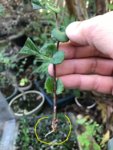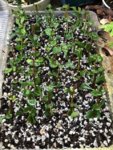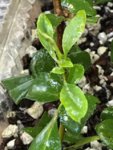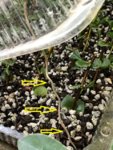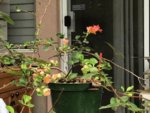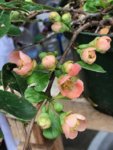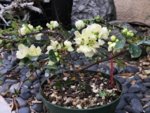Water is one of the most important factors for the living subjects in the world. In the plant, stomata is the main organ which has the survival (to keep the water balance) and productivity (in photosynthesis and respiration) roles.
Stomata regulate gas exchange water vapor and carbon dioxide (CO2) exchange between the plant and atmosphere. Its opening will let CO2 get in from the air and let water vapor escapes from the plant. It means it control photosynthesis and water balance of the tree. This balance is most important in dry, hot and high level condition.
Stomata control transpiration which is movement of liquid water into the tree from the soil via the roots, through the xylem up to the leaves, and out of the plant via stomata. Adhesive characteristics create the capillarity, which allow the water to rise up against the gravity force.
Which factors can affect transpiration?
- Water availability of soil
- The area of leaves and/or stems
- Boundary layer (the stagnant air right next to the leave and stem surface).
- Air humidity
- Light
- Hormones: abscisic acid (ABA) and ethylene.
Transpiration is increased if the light, temperature and wind are increasing. Transpiration is decreasing when air humidity, boundary layer, ABA or ethylene are increasing. ABA is a stress signal that induces stomatal closure in response to drought. ABA is produced in terminal buds and roots. Ethylene is produced by intrinsic factors or injury, stress.
What happens with the cutting?
Unrooted stem cutting is facing a severe water shortage due to loss of water supply from the root. The stomata will have a big role in the cutting survival. Prior to root initiation at the stem base, the cutting is switched into survival mode, not in productivity mode. The cutting is trying to survive by keeping its tissue from loss of water turgor. The tree dies fast if it does not have enough water in its tissue. Its stomatal conductance (means photosynthesis and transpiration) is deeply declined and gradually recovered after the root initiation. The cutting is going through 3 phases: fresh cutting, callused cutting and rooted cutting. The freshly cutting is a critical period for the cutting because the severe dehydration can happen.
With the fresh cutting, due to the vacuum effect produced by stomatal conductance, the air might be sucked into the xylem through the basal stem surface. This air amount may cause air embolism. It is almost similar to the air embolism or fat embolism in the human. This air embolism may cause the blockage of water conduction and cause severe dehydration which leads to the death of cutting.
How to avoid that? One should put the cutting right into the water or dip the basal stem end into the melt candle wax.
However, xylem embolism may be due to micro-organism, or other vessel plugging materials such as resin and latex produced from the wounds of some plant species. (Burdett, 1970, Parups and Molnar, 1972)
In the cutting, water availability is an important factor for activating root development. The cutting has to maintain a favorable water status during the root development, otherwise it will die.
Here are some more tricks:
- Best time of the day to make cutting is early morning (because plants have more moisture)
- Cover with plastic bag or place on a mist bench in a warm area away from direct sunlight.
By the way, I am planning to do an experiment with hydrogen peroxide for cutting in the near future.
*Reference:
- Unrooted stem cutting physiology, water use and leaf gas exchange of severed stem cuttings. Peter Alem. 2010
- Compound stress response in stomatal closure: a mathematical model of ABA and ethylene interaction in guard cells. Mariano Beguerisse-Dıaz, MercedesC Hernández-Gómez, AlessandroM Lizzul, Mauricio Barahona and Radhika Desikan. BMC System Biology 20126:146
- Other sources from internet.
Thụ Thoại

